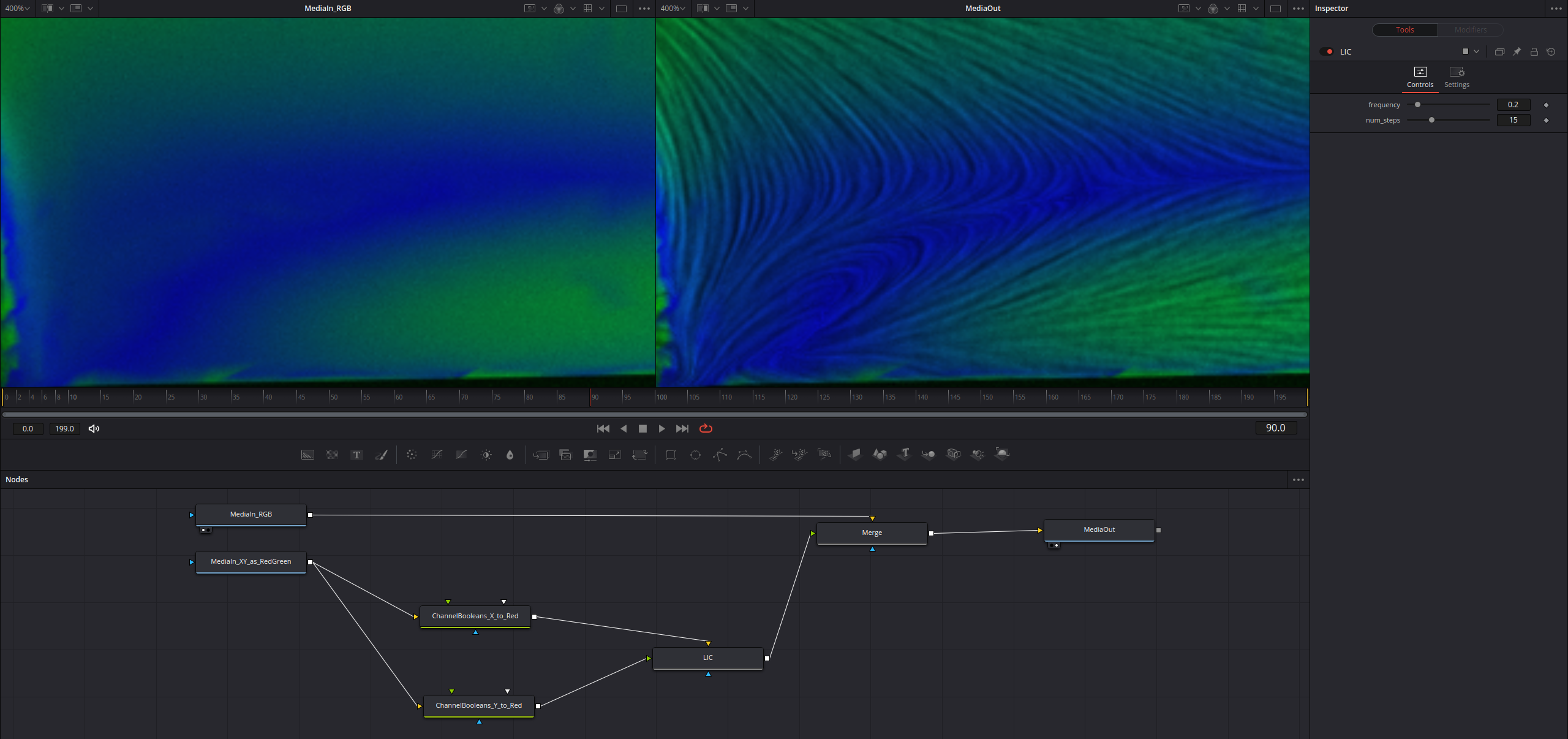Line Integral Convolution effect for OpenFX
Disclaimer: This is just a proof-of-concept at the moment.
Line Integral Convolution (LIC) is a visualization technique for vector fields. It uses a noise texture warped by the vector field to show its structure. It is commonly found in specialized CFD simulation and post-processing software.
This implementation of LIC is an OpenFX plug-in, which brings this kind of visualization into compositing software such as Nuke, Natron, Fusion (DaVinci Resolve) and others.
How to use the effect
- You will need image with screen-space X, Y vectors - presumably in EXR format.
- Magnitude of the vectors is not important, the effect will normalize them.
- Pixels where X or Y is NaN or X = Y = 0 are excluded and will be made transparent black in the output.
- Download
lic.ofx.bundlefrom GitHub releases page, or build it yourself (lictarget in CMake, then create the bundle directory structure manually). - Install the plug-in:
- On Windows, put the
lic.ofx.bundledirectory intoC:\Program Files\Common Files\OFX\Plugins - On Linux, put the
lic.ofx.bundledirectory into/usr/OFX/Plugins - For more information, see 'Packaging OFX Plug-ins' in OpenFX docs
- On Windows, put the
- Now you can use the plug-in, see below for instructions.
LIC effect in Natron
- In Natron, the usage is straightforward.
- Add the LIC effect node (located in menu:
LIC > LIC) - Connect both inputs ("Vector X", "Vector Y") to your EXR node.
- In properties of the LIC node, select appropriate source layers for "Vector X" and "Vector Y".
- For display it's suitable to Merge the LIC output with your beauty pass using blend mode "overlay" and using the alpha channel from LIC as mask.
LIC effect in DaVinci Resolve / Fusion
- In Fusion, some wrangling with the layers is necessary.
- I was able to make it work in DaVinci Resolve 17.4.6 with the following node graph:
- One MediaIn node with RGB layers (beauty pass RGB from EXR)
- Another MediaIn, where Red layer is read from X vectors and Green layer is read from Y vectors in the EXR file.
- Two Channel Boolean nodes that shuffle the X/Y vector layer into Red layer (come to think of it, you only need one for the Y vectors, the X vectors can be read from the MediaIn).
- LIC effect node (located in menu:
LIC > LIC) that is connected to the Channel Boolean nodes. - A Merge node with "overlay" blend mode for displaying.
License
The LIC effect itself (source code located in ./src directory) is licensed under MIT License,
see LICENSE.txt.
Dependencies of the code are licensed as follows:
- The SimplexNoise C++ libary by Sebastien Rombauts is licensed under MIT License, see SimplexNoise/LICENSE.txt.
- The OpenFX support C++ library and examples from The Open Effects Association Ltd. are licensed under 3-clause BSD License, see openfx/Support/LICENSE.

